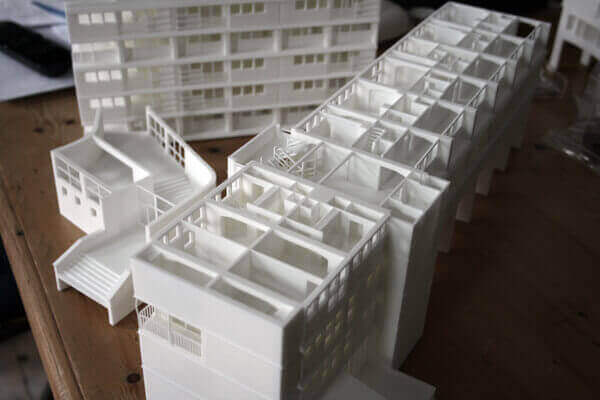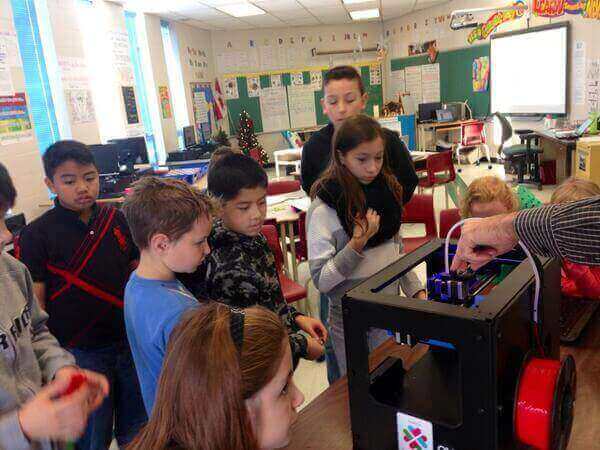3D Printing can bring exciting changes to schools across the curriculum, but only if it stays open, accessible, and focused.
Technology moves so fast that it can be hard to remember that getting computers into schools was once a big fight. Now, homework without word processing, college lectures without powerpoint: it’s almost unthinkable.
So those in the 3D printing sector are starting to wonder: what will the role of 3D printers be in schools? There’s already a lot of excitement, but also a lot of widely varied applications already in play.
Thanks, Science! (And art and design, too!)
For engineering schools, or in math and science programs in high school, the implications can be pretty straightforward. Being able to print complex forms makes, for example, geometry lessons more tangible and immediate.
Did you have to make folding dodecahedra out of construction paper in math class like we did? It was fun, but our little models look like, well, child’s play when you see that students in Jefferson County, Colorado collaborated with NASA to develop 3D printed planters to tackle the challenge of growing plants in space.
The aquaponics system they designed was tested in zero G before it was sent up to the International Space Station. As their engineering teacher Matthew Brown marvels, it’s pretty cool that these students can put on their resumes that they designed and built an experiment that flew on the International Space Station — before graduating from high school.
For art and design, too, its easy to see how a 3D printer in the department is a total game changer. Architecture programs like the New England Institute of Technology are using 3D printing to create architectural models. And with apps like Zotebook.io, 2D drawing and become 3D models, creating a new venue for student art. Not to mention courses in jewelry, furniture, or industrial design for which a 3D printer is a clear benefit.
For art and design schools that use a shorter, 10 week quarter system like the Savannah College of Art and Design, being able to use a 3D printer in addition to analog manufacturing technology allows students to complete more projects, try more things, and in short, learn more.
Gray’s Anatomy 2.0
Once you start to consider the role of education in the 3D printing ecosystem, it becomes hard to imagine a department that wouldn’t benefit from being able to manufacture student-designed 3D models.
Medical schools, like the University of Minnesota’s urology department use their 3D printer to create models for students to practice on, and to model specialized tools that would be expensive for students to buy for a single lesson.
Debates about animal dissection still circulate, prompting a range of alternatives for frog dissection in high school curricula: now among them, MakerBot’s Frog Dissection kit. The plans can be printed off in a school’s 3D printer and gives students who opt out of dissection the same immersive, hands-on experience as their peers: no frog required.
A different kind of life skills class
So maybe 3D printing in the classroom is more than a tool: it’s a teacher. Forbes reports, “Students can have an idea, design and print it, and if it doesn’t work, they can try again.”
3D printing teaches designers the importance of iteration in a visceral way. Because 3D printing allows rapid prototyping, students can learn the skills of troubleshooting and finessing their designs: impossible — or much slower and more costly — when design and manufacturing are handled separately.
Coventry head of Industrial Design explains that the idea that designers “sit down, make a sketch and expect someone to print a nice copy is just a fallacy,” he observes. “It’s part of a process really. You start with one thing; you change it; look at it; you have another idea about it; you change it again.”
3D printing classes teach both software and hardware competencies as they engage students’ creativity — TechCrunch suggests that just as those who grew up with Microsoft Word think in terms of this system, so too will students who are raised doing CAD assignments think of the whole world as model-able: a generation of little makers.
It’s hard, when talking about the applications of 3D printing, to find a balance between innovation and hype. But as Andreas Bastian writes for TechCrunch, the elements of the 3D printing ecosystem — design, hardware, software, and materials — aren’t to blame. “The core technologies are not holding back the industry, it’s the system in which they reside that is.”
So perhaps education ecosystems are the perfect place to further incubate this technology. Schools can not only become a part of the 3D printing ecosystem; they can drive it. Maybe schools — from middle schools to graduate engineering programs to open-enrollment night classes — provide the openness, accessibility, and direction that Bastian calls for to drive 3D innovation.
License: The text of "Taking it to School: Learning with 3D Printing" by All3DP is licensed under a Creative Commons Attribution 4.0 International License.


